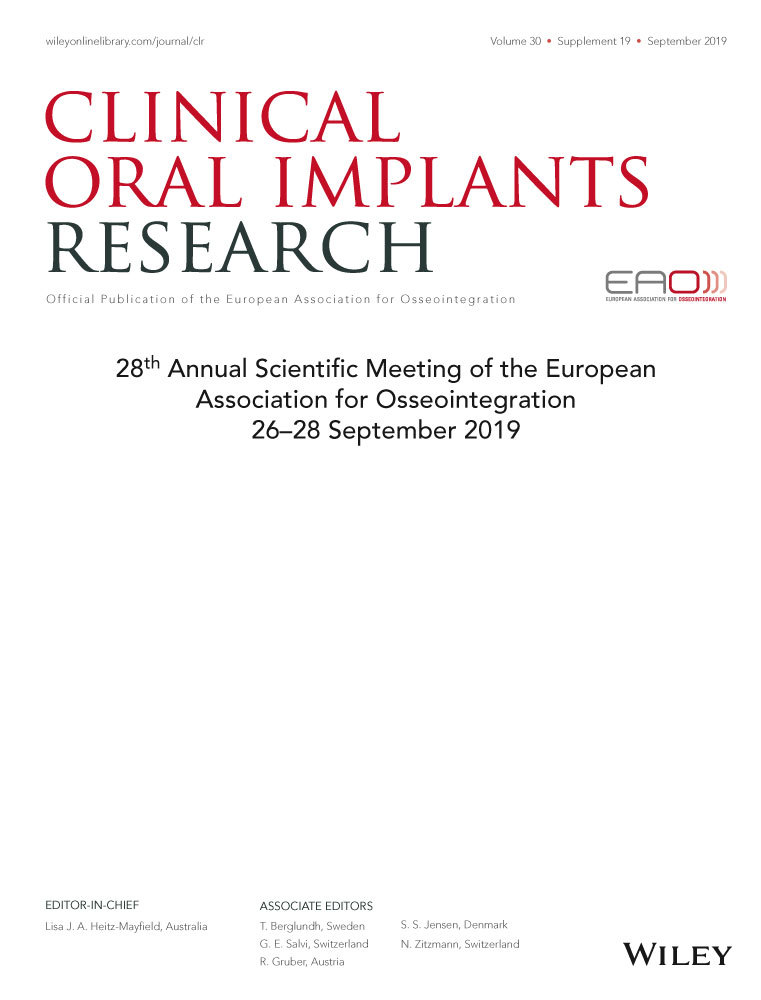Implant neck or 1-time abutment level treatment? Early outcome of bone and soft tissue from a RCT
15832 ORAL COMMUNICATION CLINICAL INNOVATIONS
Background
The ‘1 abutment-1 time’ concept has been around for a long time. It suggests that moving the restorative steps from the neck level to the abutment would avoid abutment disconnection (AD) and disturbance of the peri-implant seal; this should decrease the marginal bone loss got around implants. Logically, a positive outcome should be seen from the early treatment stages. There is no study directly comparing this approach to multiple ADs. Strong evidence of the benefit of this concept is lacking.
Aim/Hypothesis
To compare peri-implant tissues parameters measured 1mo. after final crown delivery between, 1) implants with crowns mounted on a Ti-base fixed to the implant neck that underwent 4 ADs, 2) implants with crowns fixed to a 1-time abutment torqued to the implant during surgery that underwent no AD.
Material and Methods
A randomized prospective clinical trial was set up with 60 patients receiving a ‘bone level’ implant with platform-switching (V3, MIS) in mono-edentulous sites in posterior mandible and maxilla. All implants were placed about 1.5 mm subcrestally. In the test group, a 3 mm 1-time abutment (CONNECT) was torqued during surgery at 30 Ncm. In the control group, implants received a regular healing abutment. After 2mo. of healing, a temporary crown was prepared. In the test group, impression steps did not disturb the peri-implant seal; in the control group, the peri-implant seal was disturbed. After a 1mo. loading, a final Zr-based screw-retained crown mounted on a titanium base was delivered to both groups. One month after crown delivery, bone levels and peri-implant probing depths were measured and compared with the Mann-Whitney U test (=0.05). Bone loss was measured at the first bone-to-implant contact below the implant neck.
Results
13 men and 47 women (mean age 48.3 ± 3.4 years) had 41 mandibular and 19 maxillary sites rehabilitated. All 60 implants integrated and were available for evaluation 1 month after delivery of the final prosthesis. For the test group (n = 30) with the ceramic crowns mounted on the platform of the 1-time CONNECT abutment that underwent no abutment disconnection, bone loss was 0.13 ± 0.23 mm (range, 0–0.75 mm). For the control group (n = 30) with the ceramic crowns mounted on Ti-base abutments directly affixed to the implant neck that underwent 4 abutment disconnections, bone loss was 0.67 ± 0.4 mm (range, 0–1.5 mm); the difference was statistically significant (P < 0.0001). Peri-implant probing depth was 2.24 ± 0.76 mm for the test group with the 1-time CONNECT abutment; it was 2.46 ± 0.81 mm for the control group with the prosthetic abutment directly affixed to the implant neck. The difference was not statistically significant (P = 0.414).
Conclusion and clinical implications
Within the limitations of this early evaluation 1 month after final crown delivery, it can be concluded that using the 1-time CONNECT abutment that turns ‘bone level’ implants into ‘tissue level’ implants significantly reduced the bone loss around conical connection implants placed 1.5 mm subcrestally.




